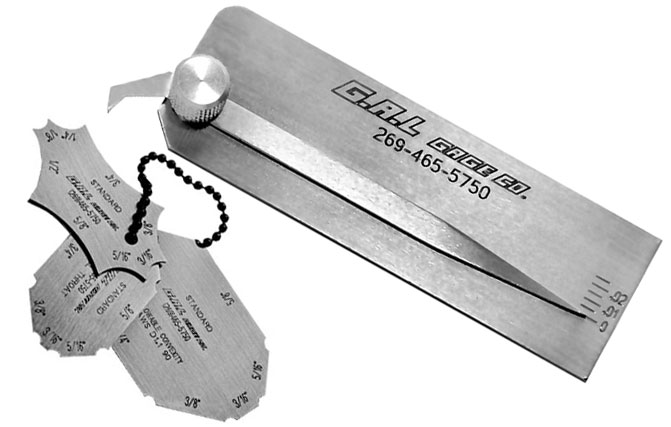Ingenious Tools and Methods for Accurate Gauge Fillet Weld Measurements
Ingenious Tools and Methods for Accurate Gauge Fillet Weld Measurements
Blog Article
The Ultimate Overview to Fillet Weld Quality Assurance: Making Certain Toughness and Durability in Your Welded Joints
In the world of welding, ensuring the stamina and resilience of fillet welds is vital for the integrity of welded joints. As we get started on this exploration of fillet weld top quality control, we will discover essential elements that affect weld strength, delve into efficient inspection approaches, and discuss methods for preventing typical weld issues.
Significance of Fillet Weld Quality Assurance
Ensuring appropriate fillet weld quality assurance is paramount in guaranteeing the structural stability and durability of bonded parts in various markets. Fillet welds are typically utilized in architectural steelwork, bridges, stress vessels, pipes, and other critical facilities where the stamina of the weld is vital to total safety and security and efficiency. Quality assurance actions such as visual evaluations, non-destructive screening, and adherence to welding procedures help identify potential defects like lack of fusion, incomplete infiltration, undercutting, or extreme reinforcement.
Key Variables Impacting Weld Stamina
Achieving optimum weld strength calls for careful factor to consider of various vital elements that affect the integrity and longevity of the welded joint. The initial important factor appertains joint prep work, which includes cleansing the base steels to remove any type of contaminants that might damage the weld. Additionally, the fit-up of the joint is vital to make sure correct penetration and fusion of the filler material.
The option of the appropriate welding method and specifications additionally plays a significant function in establishing weld strength. Elements such as warm input, traveling rate, and electrode angle can influence the high quality of the weld. Preserving the right interpass temperature level throughout multi-pass welding is vital to prevent cracking and guarantee a strong bond between the layers.
Additionally, the option of filler material and its compatibility with the base metals is vital for attaining high weld toughness. Making use of filler product with the ideal mechanical homes can improve the overall honesty of the weld. Lastly, post-weld warmth treatment and correct examination strategies are crucial action in making sure the stamina and sturdiness of the welded joint.
Examination Approaches for Weld Stability
An additional vital evaluation approach is liquid penetrant screening, where a liquid color is put on the weld surface area - Gauge Fillet Weld. The dye seeps right into any surface-breaking defects, making them noticeable under UV light. This method is reliable for discovering flaws that may not show up to the naked eye


Ultrasonic testing is also commonly used for checking weld integrity. High-frequency acoustic visit site wave are directed right into the weld, and any disturbances in the sound wave pattern suggest prospective defects like fractures or lack of combination.
These examination techniques play an essential role in making certain the quality and dependability of welds, inevitably adding to the general stamina and durability of welded joints see this here in commercial settings.
Stopping Common Weld Issues
In order to preserve the structural integrity of welded joints in industrial applications, it is important to apply preventive actions to resolve typical weld issues. One usual problem is lack of combination, where the filler product falls short to bond effectively with the base steels, bring about weak points in the weld. This can be avoided by making sure appropriate warm control and utilizing the appropriate welding technique.
Another frequent problem is porosity, triggered by gas entrapment in the weld metal during the welding process. To prevent this, it is important to cleanse the base metals thoroughly, utilize dry electrodes, and keep an appropriate welding environment with correct ventilation.
Furthermore, cracks in welds can endanger the joint's strength. To prevent this problem, it is essential to control the air conditioning price after welding, utilize pre-heating when necessary, and select ideal welding specifications.
Enhancing Bonded Toughness With Proper Methods
One crucial approach to improve weld longevity is to make sure proper weld bead placement. By placing the weld grain properly within the joint, the weld's strength and resistance to tiredness can be significantly enhanced.
Furthermore, using ideal pre-weld and post-weld heat treatments can assist lower residual anxieties and enhance the weld's sturdiness, making it much more resistant to breaking and failure gradually. Another method to improve weld toughness is to use high-quality welding consumables and base products. Picking the right filler metal and guaranteeing the sanitation of the base metals can protect against incorporations and various other defects that can compromise the weld's longevity. By implementing these proper techniques, welders can ensure that their click over here now welded joints exhibit remarkable stamina and sturdiness, fulfilling the best quality standards.
Verdict
To conclude, keeping excellent quality control standards for fillet welds is critical for making sure the strength and toughness of welded joints. By recognizing the essential variables impacting weld toughness, using evaluation approaches for weld stability, preventing typical weld defects, and utilizing correct techniques, welders can improve the total sturdiness of their welds. It is important to focus on quality control procedures to generate resilient and reliable welded joints.
In the world of welding, ensuring the stamina and longevity of fillet welds is critical for the stability of bonded joints. As we get started on this exploration of fillet weld high quality control, we will reveal essential elements that influence weld stamina, dive right into reliable inspection methods, and go over methods for protecting against common weld defects.Accomplishing optimum weld toughness calls for mindful factor to consider of numerous key factors that influence the integrity and resilience of the welded joint (Gauge Fillet Weld).In conclusion, maintaining high quality control standards for fillet welds is vital for making sure the toughness and toughness of bonded joints. By comprehending the essential elements affecting weld strength, making use of examination approaches for weld stability, avoiding common weld defects, and employing appropriate strategies, welders can improve the general durability of their welds
Report this page